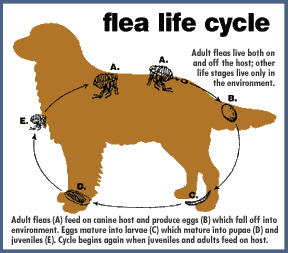Small animal veterinarians estimate that they see more patients for skin problems than any other concern, making dermatology a large part of their practice.
Healthy skin and a normal hair coat are the result of many internal and external factors. Nutrition, proper bathing and brushing, parasite prevention, and general health are all important factors. Learn more about skin conditions and what can be done for your pet in our dermatology articles below.
Itching
Living with an itchy pet can be a very frustrating experience. Not only does the pet suffer, but so does the pet owner! Continued scratching and chewing by the pet can also lead to open sores and infections. The most common causes of itching are parasites and allergies, but other conditions, such as infection, Cushing’s disease, and skin cancers, can also cause itching.
During your appointment, we will ask the necessary questions to help us determine the likely cause of your pet’s problem and thoroughly examine your pet for evidence of parasites, infections, or other possible causes. Sometimes we may need to perform diagnostic procedures such as skin scrapings, skin cytology, fungal cultures, bacterial cultures, biopsies, or blood tests for hormone imbalances. We will work with you to discover the cause of the itching and determine the best way to control it.
Skin Rash
Skin rashes can be caused by many things, such as bruising, scratching, or inflammation. During your appointment, we will thoroughly examine your pet’s skin and determine the cause of your pet’s problem, as well as the best solution.
Bumps and Lumps
During play, brushing, or grooming, you may discover a lump or bump on your pet’s skin. The most common causes of bumps include infection, cysts, and skin tumors, of which there are many types. If the lump does not seem irritated or painful, you can monitor it to see if it is growing. However, if it seems irritated or painful or if it is growing or spreading, you should bring your pet in for an exam. We will determine the cause of the bump and discuss the appropriate treatment.
My dog is itching, I think he has fleas, how can I tell?
Fleas and Ticks
 Fleas are small, dark brown-black insects. You can usually spot them near the base of the tail or on the belly; they tend to ‘flee’ from light. You may also notice “flea dirt,” which is black, granular, dirt-like material — essentially digested blood excreted by the flea.
Fleas are small, dark brown-black insects. You can usually spot them near the base of the tail or on the belly; they tend to ‘flee’ from light. You may also notice “flea dirt,” which is black, granular, dirt-like material — essentially digested blood excreted by the flea.
Ticks, usually larger than fleas, are slow-moving and can attach to the skin. If a tick is attached, grab it as close to the skin as possible and, using gentle steady tension, pull on it until it comes out. Ideally, use tweezers or a tick removal tool to avoid squeezing the tick’s body, which could cause bacteria to be expelled into your pet. Do not try to remove the tick by applying ointments, sprays, or hot matches, as this may cause more disease-carrying saliva to enter the wound.
After removal, clean the area and apply antibiotic ointment. Don't forget to wash your hands.
Tap here for more flea information
Allergic Dermatitis
Healthy skin and a normal hair coat are the result of many internal and external factors. When dogs and cats have allergies, they don’t display the same respiratory symptoms that people do. Instead, their allergies affect their skin. Pets tend to lick, chew, and scratch in response to allergies, often causing more damage to themselves than the allergies alone. In some cases, the itching is not caused by allergies but by conditions such as Cushing’s disease.



